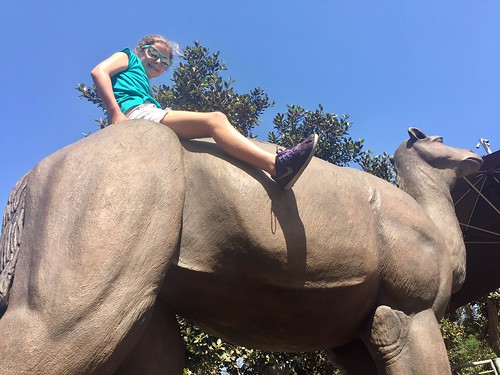ferent neurons. The majority Daclatasvir site populations of DRG neurons were targeted by the RNAi effect, regardless of the expression level of a reporter gene, GFP. Intrathecal AAV5 shall be exploited further for PubMed ID:http://www.ncbi.nlm.nih.gov/pubmed/22189597 the studies and treatments of diseases affecting DRG neurons. Further development of this approach will require assessment of the distribution properties in large animal model to define safety and efficacy. Materials and Methods Ethics Statement All experiment protocols were approved by the University of California, San Diego, Institutional Animal Care and Use Committee in accordance with the Guide for the Care and Use of Laboratory Animals. Animals Male SpragueDawley rats were housed in a light-controlled room with free access to food and water. Surgical procedures and testing occurred during the light cycle. Measures were taken to minimize the pain and discomfort of the experimental animals. Construction and preparation of viral vectors siRNA targeting the rat mTOR mRNA were selected by the `siRNA design program’ from the Whitehead Institute for Biomedical Research. A spacer was inserted into the antisense and sense sequences to generate a ��stem-loop��structure. DNA oligomers were synthesized according to the ��stem-loop��sequences, annealed and cloned into an AAV plasmid. The oligomers were placed downstream of a U6 promoter and the insertion was confirmed by sequencing. The same AAV plasmid also encoded green fluorescent protein driven by a phosphoglycerate kinase promoter. To produce self-complementary double-strand DNA genome AAV vectors, a 20 base pair sequence was deleted in the terminal resolution site in one of the two ITRs in the pAAV plasmid. Helper virus-free scAAV5 vectors were produced by transient transfection of HEK293T cells with the vector plasmid, pRep2-Cap5 and pAd-Helper  plasmid. Plasmid pRep2-Cap5 was constructed at the UCSD Vector Core by subcloning of the Cap gene from pXYZ5. Cell lysates prepared at 72 hr after transfection were treated with benzonase and viruses were pelleted through 25% sucrose-cushion ultracentrifugation. The pellets were resuspended and the viruses were further purified through anionexchange column chromatography followed by concentration through 25% sucrose-cushion ultracentrifugation. The final pellets were resuspended with a solution consisting of 10 mM Tris-HCl, pH7.9, 1 mM MgCl2 and 3% sucrose. Virus titers were determined by measuring the genome copies by real-time Q-PCR. In Vivo DRG Gene Knockdown Mediated by AAV5 Intrathecal viral vector administration The implantation of intrathecal catheter in rats has been previously described. AAV5 vectors were prepared to a concentration of 161013 viral particles/mL. Vectors were delivered in 10 mL followed by 10 mL of saline through the intrathecal catheter 24 hr following the implantation. Catheters were removed 72 hr following the vector injection. ProLong antifade medium. Non-specific labeling was determined by excluding the primary antibodies. Confocal microscopy and quantification Confocal images were acquired by a Leica TCS SP5 confocal system at fixed settings using a 106 or 206 objective at a digital size of 102461024 pixels. In case of multiple-labeled IHC, images of each channel were acquired by sequential scanning. NIH Image J was used to quantify the colocalization of different cell markers and GFP or mTOR by a researcher who was blind to the treatment. Cell profiles were manually encircled and the intensity of each color channel was record
plasmid. Plasmid pRep2-Cap5 was constructed at the UCSD Vector Core by subcloning of the Cap gene from pXYZ5. Cell lysates prepared at 72 hr after transfection were treated with benzonase and viruses were pelleted through 25% sucrose-cushion ultracentrifugation. The pellets were resuspended and the viruses were further purified through anionexchange column chromatography followed by concentration through 25% sucrose-cushion ultracentrifugation. The final pellets were resuspended with a solution consisting of 10 mM Tris-HCl, pH7.9, 1 mM MgCl2 and 3% sucrose. Virus titers were determined by measuring the genome copies by real-time Q-PCR. In Vivo DRG Gene Knockdown Mediated by AAV5 Intrathecal viral vector administration The implantation of intrathecal catheter in rats has been previously described. AAV5 vectors were prepared to a concentration of 161013 viral particles/mL. Vectors were delivered in 10 mL followed by 10 mL of saline through the intrathecal catheter 24 hr following the implantation. Catheters were removed 72 hr following the vector injection. ProLong antifade medium. Non-specific labeling was determined by excluding the primary antibodies. Confocal microscopy and quantification Confocal images were acquired by a Leica TCS SP5 confocal system at fixed settings using a 106 or 206 objective at a digital size of 102461024 pixels. In case of multiple-labeled IHC, images of each channel were acquired by sequential scanning. NIH Image J was used to quantify the colocalization of different cell markers and GFP or mTOR by a researcher who was blind to the treatment. Cell profiles were manually encircled and the intensity of each color channel was record
